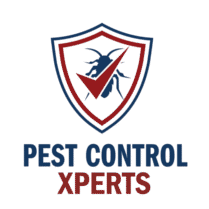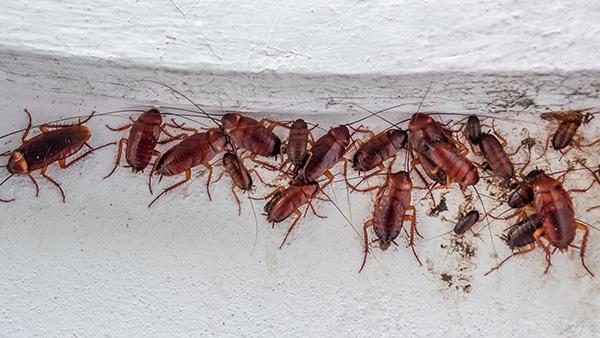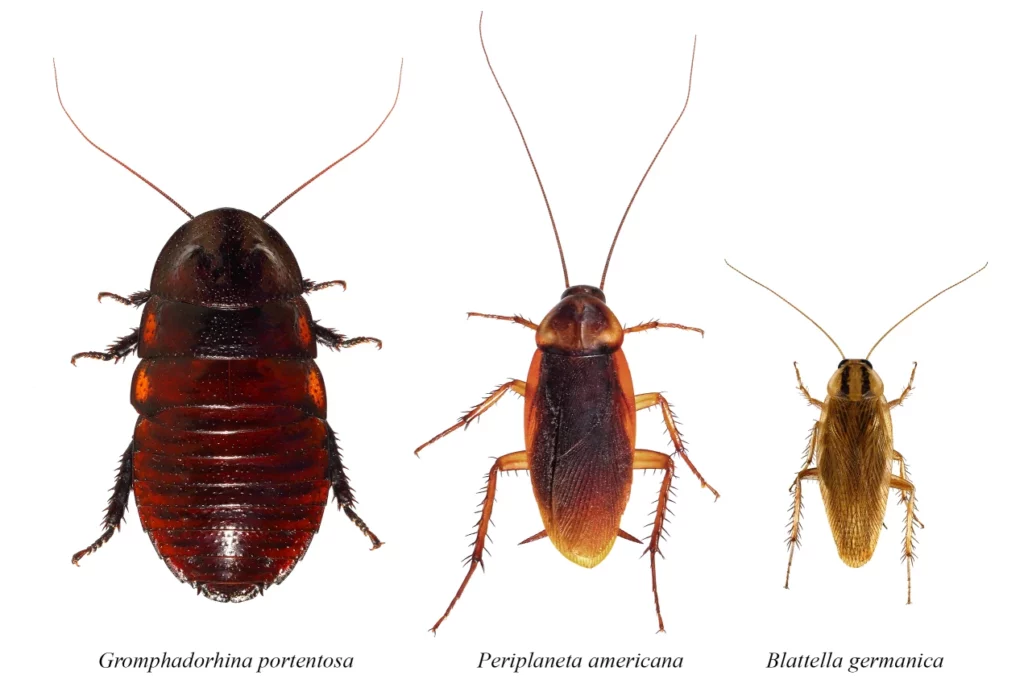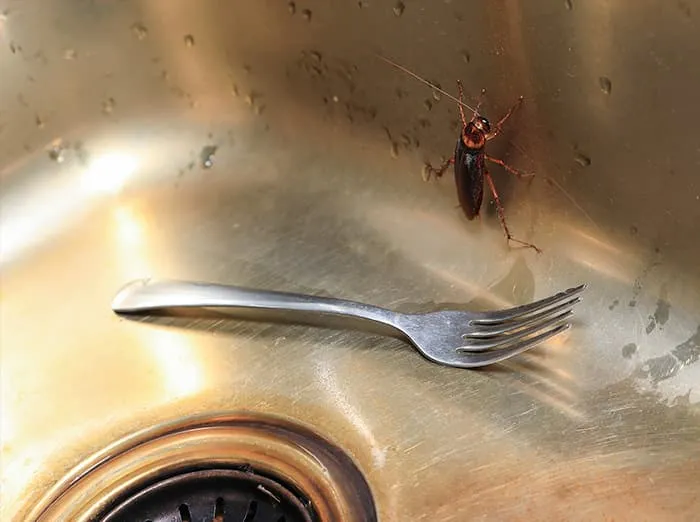Cockroach Removal Services by Pest Control Xperts in Olivehurst
Serving homes, apartments, dormitories, hotels, and healthcare offices throughout Olivehurst, Wheatland, Sheridan, California, and Surrounding Areas
Olivehurst Pest Control Experts: Definitive Cockroach Control & Extermination in Olivehurst, Wheatland, Sheridan California
The unsettling scurry across your kitchen floor, the sudden appearance in your bathroom, the persistent feeling that something unseen is lurking – these are the hallmarks of a Cockroach problem that DIY solutions simply cannot conquer. You’ve tried the sprays, the traps, the home remedies, only to find these temporary illusions undone by the hidden colony, thriving deep within your property. At Olivehurst Pest Control Experts, we understand this frustration. Our mission is to eliminate your Cockroach problem at its source, targeting the queen and nest, and providing a professional, lasting solution that reclaims your home or business from these pervasive pests.
Why Cockroach Appear in Olivehurst and Surrounding Communities
The Sacramento Valley, with its unique climate and geography, creates an ideal environment for Cockroach activity, making Cockroach control in Olivehurst, Wheatland, and Sheridan a year-round challenge. Our local expertise allows us to understand precisely why these pests are drawn to our communities.
Climate & Geography: The Sacramento Valley’s Influence on Cockroach Behavior
The Feather River floodplain dynamics, a defining feature of our region, contribute significantly to Cockroach populations. The rich, moist soil and abundant vegetation along the riverbanks provide prime breeding grounds and harborage for various Cockroach species. During periods of heavy rainfall or increased agricultural irrigation, these areas become saturated, often driving Cockroach to seek higher, drier ground – directly into our homes and businesses.
The Sutter Buttes, often referred to as the “world’s smallest mountain range,” also play an unexpected role. These isolated peaks, surrounded by flat agricultural land, act as a refuge zone, providing sheltered habitats where Cockroach can thrive undisturbed. From these natural strongholds, populations can expand and migrate into nearby urban and suburban areas, especially when environmental conditions shift.
Our distinct climate, characterized by hot, dry summers and cold, foggy winters, further dictates Cockroach seasons and behavior. During the scorching summer months, the intense heat and lack of moisture outdoors (drought conditions) force Cockroach indoors in search of water, food, and cooler temperatures. They exploit any crack or crevice, seeking the consistent humidity found in kitchens, bathrooms, and basements. As autumn transitions into cold, foggy winters, the inverse occurs. Cockroach, particularly species like the pavement Cockroach and odorous house Cockroach, seek insulation and warmth, burrowing into wall voids, attics, and crawl spaces to escape the chill. This seasonal migration means that Cockroach control in Olivehurst is not a one-time event, but an ongoing necessity.
Local agricultural irrigation systems, vital to our region’s economy, inadvertently create high-moisture pockets that are irresistible to certain Cockroach species. Fields, orchards, and vineyards, when regularly irrigated, maintain consistent soil moisture levels, which can attract moisture-loving Cockroach like the carpenter Cockroach. These Cockroach, while not feeding on wood like termites, excavate galleries in softened, moisture-damaged wood to build their nests, posing a structural threat to homes and businesses adjacent to agricultural zones. Similarly, our extensive flood control systems, while essential for public safety, can also create damp environments along canals and levees, offering secluded harborage for Cockroach that can then easily infiltrate nearby structures.
Architecture & Urban Factors: Structural Vulnerabilities and Spread
The architectural landscape of Olivehurst, Wheatland, and Sheridan presents varying degrees of vulnerability to Cockroach infestations. New tract housing developments, while seemingly modern and sealed, can still fall victim to pests. Often, these homes are built rapidly, and small gaps around utility penetrations, poorly sealed foundations, or inadequate weather stripping can provide easy entry points for Cockroach. The consistent climate control and readily available food sources within these homes make them attractive targets for species like the pharaoh Cockroach, which can establish satellite colonies in multiple hidden locations.
In contrast, older homes in the historic centers of our communities, with their mature landscaping, older plumbing, and potentially less robust foundational integrity, often face different challenges. These structures may have more extensive cracks in foundations, deteriorating window frames, or older sewer lines that offer direct access and ideal breeding conditions for odorous house Cockroach and pavement Cockroach. The presence of established gardens and mature trees can also provide natural bridges for Cockroach to access upper stories or attics.
The transportation of goods throughout our region also plays a significant role in the spread of pervasive Cockroach. Commercial trucks, often carrying food products, packaging materials, or other goods, can inadvertently transport Cockroach from one location to another. These pests can hitchhike in cardboard boxes, pallets, or even within the truck’s structure, introducing new infestations to warehouses, grocery stores, restaurants, and ultimately, residential areas. This constant movement underscores the importance of a comprehensive, proactive Cockroach control strategy for both commercial and residential properties in our service area.
Understanding the Enemy: Local Cockroach Species and Their Unique Threats
Effective Cockroach control begins with understanding the specific species you’re dealing with. Our region is home to several types, each with distinct behaviors and threats.
- Carpenter Cockroach: These are among the most destructive Cockroach in our area. Unlike termites, carpenter Cockroach don’t eat wood; instead, they tunnel through it to create nests, weakening structural integrity. Look for piles of sawdust-like frass and smooth, excavated galleries in wood. They prefer damp, decaying wood, often found in attics, crawl spaces, and around leaky pipes.
- Pavement Cockroach: Small, dark brown to black Cockroach, often found outdoors under rocks, paving stones, and leaf litter. They frequently invade homes during cooler weather or after heavy rains, seeking shelter and food. You’ll often see them trailing along sidewalks, driveways, and foundations.
- Odorous House Cockroach: These tiny, dark brown Cockroach emit a distinct, unpleasant coconut-like odor when crushed, hence their name. They are highly adaptable and can infest homes and businesses, often forming large colonies. They are known for contaminating food and are a nuisance pest.
- Pharaoh Cockroach: Very small, yellowish-brown Cockroach that are particularly challenging to control due to their ability to establish numerous satellite colonies. They are a significant health risk, known to spread pathogens, and are often found in hospitals, food processing facilities, and homes.
- Fire Cockroach: Similar in appearance to pavement Cockroach but with a preference for warmer, drier conditions. They are often found around fireplaces, furnaces, and water heaters.
- Argentine Cockroach: Small, dark brown Cockroach that form massive colonies and create distinct Cockroach trails. They are highly invasive and can quickly infest homes and businesses, seeking out food and water.
- Thief Cockroach: Tiny, yellowish-brown Cockroach, named for their habit of stealing food from other Cockroach species. They are often found in pantries and food storage areas, contaminating food products.
Problems Cockroach Create for Homes and Businesses
An unchecked Cockroach infestation is more than just an annoyance; it poses significant risks to your property, health, and reputation.
- Food Contamination: Cockroach forage for food, often crawling over countertops, dishes, and stored food items, spreading bacteria and pathogens.
- Property Damage: Carpenter Cockroach can cause structural damage by tunneling through wooden beams, floors, and walls. Other Cockroach can damage insulation, wiring, and personal belongings.
- Brand Reputation Risk: For businesses, especially in the food service or hospitality industry, a Cockroach infestation can severely damage your reputation, leading to lost customers and revenue.
- Health Risks: Cockroach are known carriers of various bacteria, viruses, and parasites, which can trigger allergies, asthma attacks, and spread diseases like salmonella and E. coli. Their frass and shed skins can also exacerbate respiratory issues.
- Satellite Colonies and Nests: Many Cockroach species, particularly pharaoh Cockroach, establish multiple satellite colonies, making eradication extremely difficult without professional intervention. These hidden nests can quickly lead to an overwhelming infestation.
- Moisture Cockroach and Mounds: Certain Cockroach species are indicators of moisture problems within your home. Their presence, especially in large numbers, can point to hidden leaks or inadequate ventilation, which can lead to further structural damage.
Signs of an Escalating Cockroach Infestation: When to Call the Experts
Knowing the signs of a growing Cockroach problem can help you act quickly and prevent a full-blown infestation.
- Cockroach Trails: You might notice distinct trails of Cockroach marching along walls, baseboards, or across your yard, especially pavement Cockroach and Argentine Cockroach.
- Frass: Small piles of sawdust-like material (frass) near wooden structures are a clear indicator of carpenter Cockroach activity.
- Visible Cockroach: Seeing Cockroach during the day is a strong sign of a large, established colony, as most species are nocturnal.
- Contaminated Food: Finding Cockroach in your pantry, on food items, or in pet food bowls.
- Structural Damage: Softened or hollow-sounding wood, especially in areas prone to moisture, could indicate carpenter Cockroach activity.
- Unpleasant Odors: A musty, sweet, or oily odor, particularly in confined spaces, can be a sign of a large Cockroach colony. Odorous house Cockroach are especially known for this.
- Colony Budding: If you’ve tried DIY treatments and the Cockroach seem to scatter and reappear in new locations, it could be a sign of colony budding, where a single colony splits into multiple smaller ones, making eradication even harder.
Why Professional Extermination is Essential for Cockroach Removal
The allure of store-bought sprays and traps is understandable, but for a true Cockroach infestation, these DIY methods offer only temporary relief, creating illusions undone by the hidden colony. Here’s why professional extermination is the only definitive solution:
- Hidden Colonies: Cockroach colonies are often located in inaccessible areas like wall voids, under foundations, within insulation, or deep within wooden structures. Store-bought products rarely reach these hidden nests, allowing the problem to persist and re-emerge.
- Species Identification: Different Cockroach species require different treatment approaches. A professional can accurately identify the species and tailor a treatment plan for maximum effectiveness.
- Resistance to Pesticides: Cockroach can develop resistance to commonly available pesticides, rendering DIY treatments ineffective over time. Professionals have access to a wider range of advanced products and techniques.
- Thoroughness: Professional Cockroach treatment involves a comprehensive inspection, identification of entry points, and targeted application of treatments that go beyond surface-level spraying.
- Colony Elimination: Our focus is on eliminating the entire colony, including the queen and the nest, preventing future generations from emerging and ensuring a lasting solution. DIY methods rarely achieve this complete eradication.
- Safety: Misuse of pesticides can be harmful to humans and pets. Professionals are trained in safe handling and application techniques, minimizing risks.
Advanced Cockroach Exclusion Methods and Structural Pest Control
After eradication, our focus shifts to preventing future infestations through advanced Cockroach exclusion methods and structural pest control. This proactive approach is crucial for long-term protection.
- Sealing Entry Points: We meticulously inspect your property to identify and seal all potential entry points, including cracks in foundations, gaps around utility pipes, vents, and windows. This creates a physical barrier against invading Cockroach.
- Managing Moisture: Cockroach are highly attracted to moisture. We provide recommendations and implement solutions for moisture control, such as repairing leaks, improving ventilation in crawl spaces and attics, and ensuring proper drainage around your foundation. Addressing moisture issues is particularly effective against moisture Cockroach and carpenter Cockroach.
- Perimeter Defense: We establish a robust perimeter defense around your home or business using specialized treatments that deter Cockroach from approaching and entering your structure.
- Crack and Crevice Treatment: Targeted treatments are applied to cracks and crevices where Cockroach hide and travel, eliminating any lingering pests and preventing new ones from establishing themselves.
- Cockroach Barriers: For persistent issues, we can implement Cockroach barriers, which are specialized treatments designed to create an invisible shield that Cockroach cannot cross.
- Foundation Sealing: A critical step in structural pest control, foundation sealing closes off potential entry points at the ground level, preventing subterranean Cockroach from accessing your property.
Our Cockroach Removal Method: A Step-by-Step IPM Approach
At Olivehurst Pest Control Experts, we utilize an Integrated Pest Management (IPM) approach for Cockroach removal, a comprehensive and environmentally responsible strategy that focuses on long-term prevention and control.
- Consultation & Inspection: Our process begins with a thorough inspection of your property to identify the Cockroach species, locate harborage areas, assess the extent of the infestation, and pinpoint potential entry points. We also discuss your concerns and any previous attempts at control.
- Customized Treatment: Based on our findings, we develop a customized treatment plan tailored to your specific situation. This may include a combination of Cockroach baiting systems, targeted liquid applications, and dust treatments. Our goal is always colony elimination, targeting the queen and nest for definitive results.
- Exclusion & Maintenance: After initial eradication, we implement exclusion techniques to prevent future infestations. This includes sealing entry points, addressing moisture issues, and providing recommendations for ongoing maintenance to keep your property Cockroach-free.
- Monitoring: We utilize monitoring stations to track Cockroach activity and ensure the effectiveness of our treatments. This allows us to make any necessary adjustments and provide ongoing protection.
Tailored Commercial Cockroach Services
Businesses in Olivehurst, Wheatland, and Sheridan face unique challenges when it comes to Cockroach control. A single sighting can damage reputation, lead to health code violations, and impact profitability. Olivehurst Pest Control Experts offers tailored commercial Cockroach services designed to meet the specific needs of various industries.
- Discrete Service: We understand the importance of discretion for your business. Our technicians operate professionally and can schedule services during off-hours to minimize disruption to your operations.
- HACCP Compliance: For food service establishments, we develop Cockroach control plans that adhere to HACCP (Hazard Analysis and Critical Control Points) principles, ensuring your facility meets stringent health and safety standards.
- Integrated Pest Management (IPM): Our commercial IPM programs focus on long-term prevention, combining strategic treatments with environmental modifications to create a Cockroach-free environment.
- Regular Monitoring & Reporting: We provide ongoing monitoring and detailed reporting of Cockroach activity, allowing you to track progress and maintain compliance.
- Employee Education: We can provide guidance and training for your staff on best practices for Cockroach prevention, such as proper sanitation and waste management.
Why Olivehurst Relies on Olivehurst Pest Control Experts for Definitive Cockroach Control
When it comes to Cockroach control in Olivehurst, Wheatland, and Sheridan, property owners consistently choose Olivehurst Pest Control Experts for our unwavering commitment to definitive, lasting solutions.
- Regional Familiarity: Our deep understanding of the local climate, geography, and architectural nuances of the Sacramento Valley allows us to implement highly effective, hyper-local Cockroach control strategies. We know the specific Cockroach species prevalent here and their seasonal behaviors.
- Complete Colony Elimination: We don’t just treat the visible Cockroach; our comprehensive approach focuses on eradicating the entire colony, including the queen and the nest. This commitment to source elimination is what sets us apart and ensures a truly Cockroach-free environment.
- Expertise and Experience: Our team of pest control specialists possesses extensive experience in dealing with all types of Cockroach infestations, from common pavement Cockroach to destructive carpenter Cockroach. We stay up-to-date on the latest industry advancements and best practices.
- Customer-Centric Service: We prioritize your peace of mind. From the initial inspection to follow-up services, we provide clear communication, transparent processes, and personalized solutions to meet your unique needs.
- Proactive Prevention: Our services extend beyond eradication to include robust exclusion methods and ongoing prevention strategies, safeguarding your property against future Cockroach invasions.
The Value of Seasonal Cockroach Prevention
Given the distinct seasonal changes in our local climate, seasonal Cockroach prevention is crucial for maintaining a Cockroach-free property year-round. Olivehurst Pest Control Experts offers bi-monthly and seasonal Cockroach service plans tailored to the unique pest cycles of spring, summer, and fall.
- Spring: As temperatures rise, Cockroach become more active after winter dormancy. Our spring service focuses on perimeter defense and sealing new entry points to prevent Cockroach from establishing themselves as they emerge.
- Summer: The hot, dry summers drive Cockroach indoors in search of moisture. Our summer treatments target interior harborage areas and reinforce exterior barriers to combat increased Cockroach pressure.
- Fall: As winter approaches, Cockroach seek warmth and shelter. Our fall service concentrates on sealing potential overwintering sites and applying treatments to prevent Cockroach from seeking refuge inside your home or business.
A consistent, seasonal approach ensures that your property remains protected against Cockroach invasions, adapting to their changing behaviors throughout the year.
Don’t let Cockroach continue to disrupt your peace of mind or threaten your property. The endless cycle of DIY attempts and temporary fixes only prolongs the problem, allowing the hidden colony to grow stronger. It’s time to choose the definitive solution. Contact us for an immediate consultation and let Olivehurst Pest Control Experts reclaim your home or business from Cockroach today.
We proudly serve Olivehurst, Wheatland, Sheridan, and all surrounding zip codes in California.





